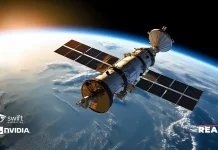Navigating through heavy traffic and uneven roads while adhering to traffic regulations and avoiding reckless drivers can be quite a daunting task. However, the advanced driver assistance system (ADAS) makes it easy. This exceptional system not only improves the driving experience but also keeps drivers and passengers safe. From assisting drivers on bumpy roads to parking vehicles safely, this remarkable tool manages everything we need.
So, fasten the seatbelts and get ready to take a safe ride with ADAS.
What is the Advanced Driver Assistance System (ADAS)?
The advanced driver assistance system (ADAS) is a set of various technologies designed to assist drivers in the safe operation of a vehicle. It includes components such as sensors, microprocessors, software, and actuators. ADAS leverages automated technology to identify obstacles nearby or driver errors and act accordingly. It aims to prevent deaths and injuries by reducing the number of car accidents and increasing traffic-related damages.
ADAS facilitates various levels of autonomous driving and is intended to increase car safety and comfort. As the demand for driving safety increases, the ADAS is also gaining attention and adoption. According to Extrapolate’s recent study, the global advanced driver assistance system (ADAS) market is likely to value around $67.19 billion by 2030.
Essential Components of the Advanced Driver Assistance System (ADAS)
ADAS includes various components and integrates several technologies to guide the driver and ensure safety. Below are some of the main components and technologies used in the ADAS system.
● Sensors
ADAS relies on a variety of sensors, including cameras, proximity sensors, lidar, radar, and ultrasound. These sensors are crucial for detecting nearby obstacles, monitoring the vehicle’s surroundings, and providing essential data for decision-making processes.
● Microprocessors and software
The data collected by the sensors is processed by microprocessors and software. These components analyze the sensor data, make real-time decisions, and execute actions to assist the driver in safe vehicle operation.
● Actuators
ADAS systems utilize actuators to execute physical actions based on the decisions made by the microprocessors and software. These actuators can control steering adjustments, acceleration, and braking to prevent accidents and enhance driving safety.
● Human-Machine Interface
ADAS systems often include a human-machine interface to communicate important information to the driver. This interface can provide visual or auditory alerts, display relevant information, and interact with the driver to enhance their awareness and decision-making.
● Safety-Critical Applications
The World Health Organization states that over 1 million individuals lose their lives in road accidents across the world each year, with as many as 50 million people sustaining injuries or disabilities. Vital safety-critical ADAS applications include lane departure warning & correction, pedestrian detection & avoidance, adaptive cruise control, traffic sign recognition, and more.
What’s New in the Advanced Driver Assistance System (ADAS) Field?
ADAS is gaining traction with new advancements that are making it a more viable option for safe driving. Below are the recent innovations in the ADAS system:
1. Advanced Supervision System
Mobileye, the leading vendor of advanced driver assistance systems software, offers a range of applications and ADAS software. It is advancing autonomous driving technology by providing software and chips for front-facing cameras.
The company’s SuperVision system provides hands-off navigation capabilities for autonomous vehicles to control standard driving functions. The company’s technology has been integrated into hundreds of car models from major automakers, including BMW, Honda, Audi, FCA, General Motors, Ford, Hyundai, Nissan, Kia, and Volkswagen.
2. Remarkable ADAS Solutions
Uno Minda provides advanced ADAS products with specialized parking assist features, such as ultrasonic sensors, 360-degree camera systems, and automated parking assistance. This solution is equipped with eye-tracking and facial recognition technologies to monitor and assess driver behavior and offer timely warnings on signs of tiredness or distraction.
This software enhances convenience and reduces accidental damage while also promoting safer driving habits.
3. A Multi-Camera Driving Assistance System
The global driving assistance systems provider, Valeo, offers ADAS architecture and solutions to various renowned companies. Its solutions include sensors, cameras, advanced software, AI, and cyber-security. Valeo’s 360 Vue® multi-camera system detects obstacles during maneuvers and parking, and the rain-lighting-humidity sensor automatically adjusts functions. Valeo is also leading in the domain controller market, aggregating vehicle software to ensure the operation of the entire ADAS system.
The company is also developing perception layers for its sensors and cameras. Its computer vision algorithms for surround cameras offer parking and low-speed maneuvering software solutions, safety, assisted driving, and partial automation functions.
4. Use of the 5G Network
Magna, a global mobility technology company, partners with Telia Sweden, NorthStar, and Ericsson’s 5G innovation program designed for industrial enterprises. The partnership creates a dedicated 5G network at Magna’s test track. The 5G network will provide low-latency gigabit speeds as well as seamless connectivity for new ADAS trials, as well as enabling ongoing research into joint sensing and communication systems.
Magna’s driving automation and driver support systems rely on real-time data from vehicle sensors. The 5G network, powered by an Ericsson dual-mode 5G core, will enable high-speed connectivity across large geographical areas. Magna’s ADAS technology supports driver safety by controlling steering, brakes, and acceleration, paving the way for future autonomous driving and new mobility solutions.
In a Nutshell
The introduction of advanced driver assistance systems (ADAS) shows a significant leap forward in automotive safety and driving experience. From the integration of advanced sensor technologies to machine learning algorithms, ADAS has continually grown to provide drivers with almost complete safety. This system offers enhanced situational awareness, proactive collision avoidance, and overall improved road safety.
With the ongoing pursuit of innovation in image technology, sensor fusion, 5G connectivity, and safety-critical applications, ADAS is poised to continue its transformative impact on the automotive industry.
Browse More Posts:-
Flatback Tapes Market
FM Broadcast Radio Transmitters Market
Frying Pan Market
Full-Service Clinical Research Organization (CRO) Market




